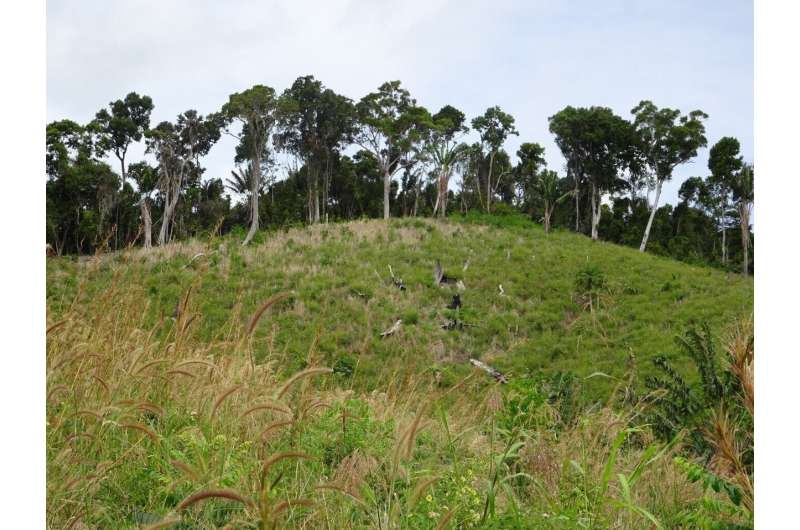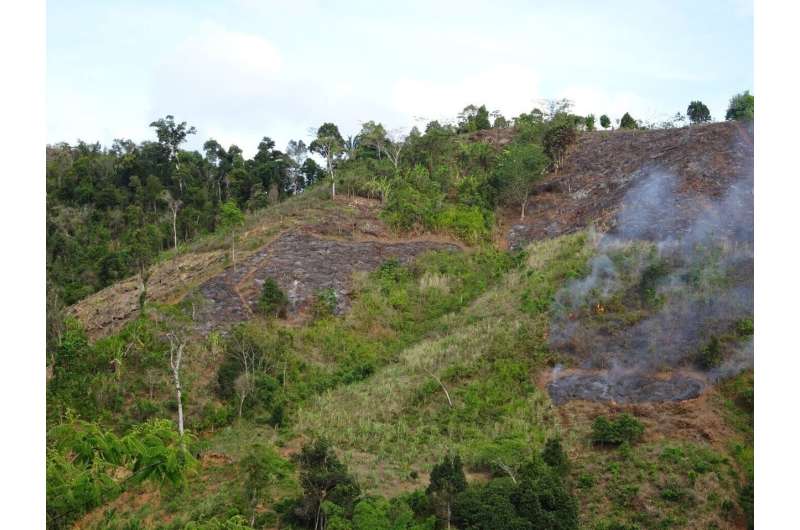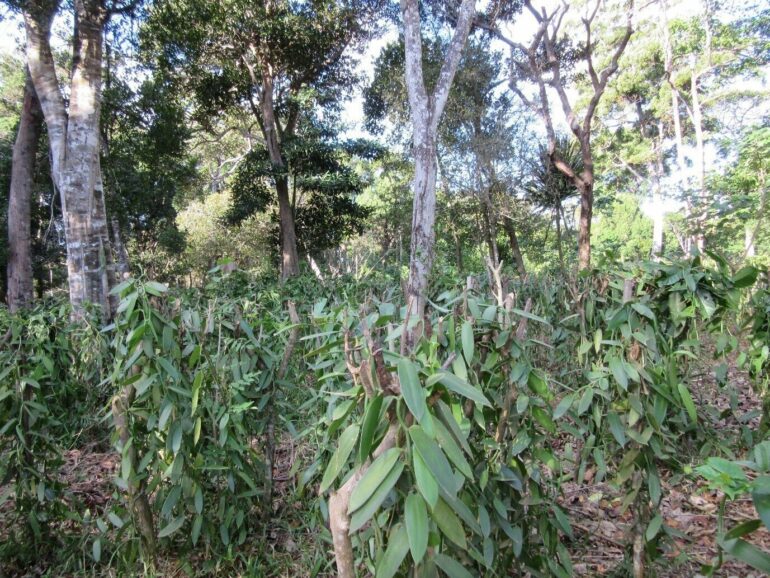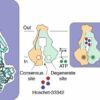Madagascar is the most important country for vanilla production—the fragrant ingredient that is a favorite flavor for ice cream, cakes and cookies. The vanilla orchid is cultivated in the tropical northeast of the island. Over the past five years, a research team from the University of Göttingen and the University of Antananarivo has been studying vanilla cultivation and its impact on people and nature. They found that vanilla cultivation in agroforestry systems, in which the vanilla grows under trees providing shade, has benefits for both humans and nature compared to other forms of land use. However, this is only the case when vanilla is planted on fallow land that has already been deforested. The results were published in the Proceedings of the National Academy of Sciences (PNAS).
The research team collected data on biodiversity, ecosystem services such as carbon storage, as well as harvest and profitability, taking into account different land uses. The scientists focused on vanilla agroforestry systems. These are often established directly in the forest: farmers remove shrubs and individual trees, and plant the vanilla orchid directly under the remaining trees. Alternatively, vanilla agroforestry systems can be established on fallow land that was burned to accommodate rice fields. In this case, the land used for vanilla farming is more open, allowing for trees to regrow.
Therefore, the team considered in their analysis how the land had been used in the past. Data on species richness of seven species groups, five ecosystem services, and harvesting and profitability were compared with previous land use. This interdisciplinary approach allowed the researchers to explore the positive and negative impacts of land-use change, taking into account multiple perspectives to see the full picture.

Primary forests in northeast Madagascar (background) are irreplaceable for many endemic species and ecosystem services, as the study clearly shows. Vanilla agroforests could be a profitable alternative to burning down primary forests thanks to low land consumption, but only if they are not established in forests themselves. © D. Martin
Vanilla agroforestry, which is established on open fallow land, has clear advantages for both people and nature. The conversion of forests into vanilla agroforestry systems, on the other hand, causes disadvantages for animals and plants, because important functions of forests are lost. Converting more forests to vanilla agroforests can therefore only be justified as an alternative to burning the land, in which both biodiversity and ecosystem services suffer even more.
Dr. Fanilo Andrianisaina, a researcher at the University of Antananarivo, Madagascar, highlights the benefits of vanilla cultivation for farmers: “At the high prices we were able to document during the study period, vanilla is very profitable. Of course, a lot of money also stays with the middlemen and exporters, but many vanilla farmers have been able to afford new houses, solar panels or motorcycles; this would have been unthinkable in the past.” However, the team also observed that vanilla prices have collapsed in the past two years, putting profits at risk.

Burning the fields for rice cultivation is the main reason for forest loss in northeastern Madagascar. Vanilla agroforests established on already deforested land could provide a sustainable alternative. © D. Martin
This raises the question of how far the research results can be transferred to the future and to other landscapes. “It seems to me that a fair and stable vanilla price is extremely important in the long term,” says Dr. Dominic Martin of the University of Göttingen, first author of the study. “The constant ups and downs in prices make it impossible for producers to focus on sustainable vanilla cultivation—the risk of being economically dependent on vanilla alone is simply too high,” he adds.
Professor Holger Kreft, University of Göttingen, who coordinated the study, says that “prior land use is crucial in assessing land-use change in other regions of the world as well. This means that our model is universally applicable, highlighting the relevance of our results for farming and ecology around the world.”
More information:
Dominic Andreas Martin et al, Land-use trajectories for sustainable land system transformations: Identifying leverage points in a global biodiversity hotspot, Proceedings of the National Academy of Sciences (2022). DOI: 10.1073/pnas.2107747119
Provided by
Göttingen University
Citation:
How vanilla cultivation in the right place pays off for people and nature (2022, February 16)



